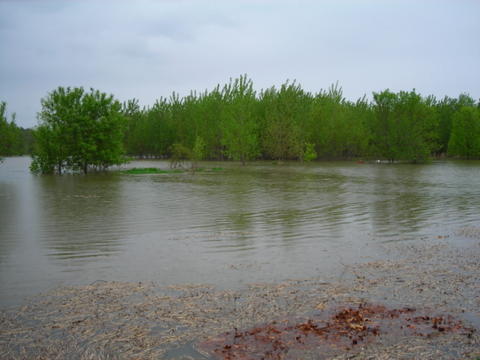to say its been a long time, and what feels like a lifetime, would be an understatement. On all fronts I might add. I'm half tempted in the spirit of the blog to tell all, but luckily for all I don't have four days to tell you all the various stories, so in brief:

1. Rachel and I went to a Wal-Mart yesterday, I won't deny it. I will say it's the first time in a few years and it was a bit on the nauseating side. Why we went: the prized easy-up tent, or facsimile thereof, certainly produced in china. This tent will be used by us at farmers markets, which, if you CSA members didn't know, we are going to be participating in one or two. Right now we have ten members, so we will certainly have some excess vegetables.
Why Wal-Mart and not another vendor, less nauseating? We tried eBay, which seems to have become not so much of an open market, but really, kinda closed. ie, it's not you or me auctioning a lot of this stuff, it's big vendors, totally skirting the auction mechanism. And bonusly, finding a way to get in some crazy shipping fees, not to be known until after purchase. And from the trademarked easy up dealer we are talking almost triple the price . . . so that's my excuse and hopefully won't have a reason to go back for at least another few years, and I'll spare you all other pithy observation on Sprawl-Mart.
2. Thought this message was funny (I mean, does one really need to specify
National Bitter

melon council, as if they could be confused with the vermont or arizona bitter melon council), and believe it or not, we hope to be producing some of these bitter melons for you all, and then you can tell your stories to whichever Bitter Melon Council you choose:
--------- Forwarded message ----------From: The National Bitter Melon Council <
http://us.f315.mail.yahoo.com/ym/Compose?To=info@bittermelon.org>Date: May 5, 2006 2:01 PMSubject: Invitation for on-line Contributions: Goya Honoring Day 5/7/06To: Rachel Daley <
http://us.f315.mail.yahoo.com/ym/Compose?To=rachelmdaley123@gmail.com>Dear Rachel, Happy day-before-the-day-before Goya Honoring Day!Goya Honoring Day, originating in Okinawa, Japan, is aspecial day to recognize Bitter Melon as a featuredproduct of that tropical island ("Goya" is the term for Bitter Melon in Okinawa dialect.) In Japan, GoyaDay is celebrated on May 8th because the Japanesepronunciation of the date "May" and "8" sounds thesame as "Go-Ya". Because of the time differencebetween Boston and Japan our celebration will occur on May 7th, which is actually May 8th in Okinawa.To honor the international community that has beengathering around this great gourd, we are asking thosewho we've been in contact with across the globe tosend an email with thoughts, stories, quips, recipies,growing tips, anything involving your relationship toBitter Melon. Email all texts to
http://us.f315.mail.yahoo.com/ym/Compose?To=info@bittermelon.org.If you have any questions, you can call me at 857-928-4196 or reach me by email.We hope to share these emailed comments at our AnnualMeeting which will take place at 4:30 PM EasternStandard Time. Please email them to
http://us.f315.mail.yahoo.com/ym/Compose?To=info@bittermelon.org by noon on Sunday if you wouldlike your comments shared. In order to protect yourprivacy, we will not be sharing any email addresses orcontact information with the public at any time. If you would like us not to use your name as well, pleaselet us know.If you have any questions about this project, don'thesitate to contact me. Thank you for your time andinterest, and I will be in touch later in the month when images from the event are posted online.All the best, Andi SuttonDirector of Public Relations, NBMC
3. Another Farm Decision: Rachel and I are definitely not happy using "remay" (sp?) all the time. Until recently I didn't even realize it was a petroleum byproduct product. Trying to remain blissfully ignorant I was. First, to backtrack, let me explain what remay is for those who might not know: it's a fabric that you cover your crops with (and darnit I should have a picture of that, will next time) both for added warmth, but even more importantly in the Intervale, to protect from flea beetles. These very little critters will eat all the leaf matter of any brassica (cauliflower, broccolli, mustard greens, most asian greens) and organically, remay seems to be the standard way of solving the problem, but it is a pain in the butt to drag this fabric across a windy field, then totally seal it off from the outside world, except to take off the remay for an hour to hoe it and such, then put it back on, just talking about it is tiring. So, rachel and I are going to take a few steps to deal with this problem in another way: the first, a) plant less crops susceptible, more insusceptible, such as dandelion greens, chard. b) try neem oil and compost tea, including some of our own home-grown stinging nettle. the crops will once again be open to the air.
4. Rachel has been under the weather, but let it be known throughout the bloggosphere, that it, me, everything, is hoping to hear from her soon, it's a real day-brightener.
That's probably enough points for today, I'll have more business of the farm points for you all soon, so, uh, get ready for the test.



